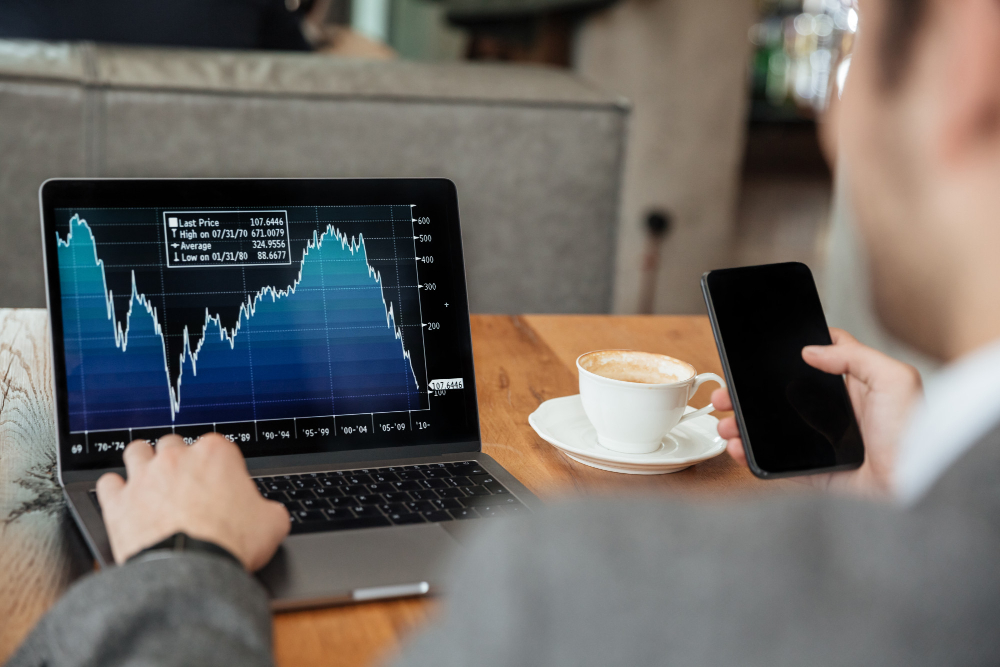Here at Share Wealth Systems we take great pride in the development and implementation of robust mechanical trading and investing strategies. I am continually asked about the development and design of these strategies, and I have written many posts and articles about the topic and done many presentations to audiences, 3rd party associations and organisations. This week, I thought I would share with you some information from Dr Brett Steenbarger, a US based psychologist, trader coach, and author of several trading related books, including The Psychology of Trading. In the article Brett highlights many of the same points that we adhere to in the development of our trading strategies.
“To understand how to build a robust mechanical strategy it is important to understand what a robust mechanical strategy is. A mechanical strategy is simply a quantified decision stream that determines position size, entries, exits and stops all in a completely hands off fashion. For a mechanical strategy to be robust, it must capitalize on a “trading edge”. This can be anything from a statistical edge (trending) to an execution edge (arbitrage). Furthermore, this strategy must hold up over an extensive period of trades historically (at least several hundred) and must hold up in future trading (which can be simulated).
A mechanical system has several advantages that discretionary traders do not, such as the ability to perform quantitative and data mining analysis quickly and over extended historical periods. Additionally, mechanical systems can alleviate some of the emotional distress that accompanies discretionary trading – particularly among new traders.
To design any mechanical strategy it is important to consider three things before anything else: 1) your objective for that system, 2) your market, 3) your timeframe. Once you have determined this, it is easy to find your essential methodology because there are only 4 ways to trade any market: 1) trend trading, 2) momentum trading, 3) reversion to the mean trading, 4) and fundamental trading. Once you have determined your objective, market, timeframe and method you are ready to attempt to put together your first strategy. Many of you are probably thinking at this point, “what if I don’t know any of that stuff?”
The very best way for the inexperienced trader to build a new system is to test ideas. This can be done in two ways – visually or programmatically. For someone without extensive programming experience, the best would be to start with what I call “candle by candle” back testing. This is performed by taking an idea (such as a moving average crossover) and testing it with historical data on the given market and time frame by moving your charts forward from the past into the future and trading the way the system would – without future knowledge of the markets.”
Bar-by-bar with charting software is exactly how I first started my testing of trading ideas in 1990. Every time that I made a modification to a concept the bar-by-bar testing had to start from scratch again!
“After doing this for some time, I felt that there had to be a more effective way to test ideas. And there is – programmatic testing. Programmatic testing again can be very easy – a simple moving average cross is a simple thing to program in nearly any programming language. However, the difficulties that can destroy the beginning programmatic trader are nearly endless. Many popular trading packages do not trace your equity position tick by tick, rather it is tracked bar by bar (and if you’re trading daily bars you can imagine the problems). Also, ideas that I had tested extensively by hand sometimes were difficult to program. I have had so many experiences where I miscoded a critical concept (even by a slight degree) and this ended up giving drastically different results than my hand testing. Without the knowledge that it was the code that was incorrect, I might have falsely dismissed many trading ideas that were in fact valid.
Additionally, at this level of programmatic trading it is very important to consider factors of minimizing inputs (degrees of freedom) and utilizing flexible inputs. An example of this would be to utilize a 3 ATR stop instead of a 60 pip stop so that as the prices and volatility of the market fluctuate your stop is not being taken out because of random noise. Other ways that you can improve the robustness of your strategy include utilizing realistic fills and commissions and ensuring that your limit orders would have actually been filled (this is not as easy to test in some software as it should be).
Optimization is another useful tool to consider at this point in your strategy testing career. This is a powerful but two edged sword. Utilization of genetic algorithms and similar “hill climbing” techniques are a common way to ensure that your optimization does not give you a single point anomaly, but rather that there are similar input values surrounding your inputs that give similar equity graphs. Walk forward testing is another useful tool that can help you achieve realistic results and see for yourself whether a strategy would have been successful on data that was not optimized (similar to the future).
Going further into programmatic trading, after having experienced many pitfalls, I feel that I ought to be able to test more than one idea at a time. In fact, ideally I would like to test many ideas, over multiple time frames and multiple markets. Right now this is the work that I am involved in designing and I feel that this will help me analyze the markets with the speed and precision that will take my trading to the next level. This is the arena of the best strategy designers, where statistical data mining, market analysis, timeframe analysis, technical analysis, fundamental analysis, and money management are combined with realistic evolutionary testing into a single package.”
At Share Wealth Systems we have also included exploratory simulation and the analysis of the outputs of these simulations to determine the best and boundary position sizes to use depending on starting capital, brokerage rates and time available to manage multiple simultaneously open positions.
“As you can see, advanced programmatic testing and trading is a complex arena. I myself am still learning and by no means consider myself an expert. The good news is that successful robust mechanical strategy creation and implementation can be done in as simple or as complex a manner as you choose. After all, the very simple strategies tested and/or designed with candle by candle backtesting are still a cornerstone of my trading methodology.”
I trust that this provides an insight into what is involved in designing and researching mechanical strategies such as SPA3 and Intelledgence.



2 Responses
Hi Gary,
I have been trying SPA3 paper trading on the NASDAQ (Siroc 20/8) and, prior to the recent “Market High” signal, I have been finding that all too often I am getting “buy” signals at the top of a rally and a “sell” near the bottom. From a psychological point of view, this doesn’t help no matter what is said. When I look at the NASDAQ system portfolio, it looks like it has the same problem with finding profitable trades. Is this because of SPA3 in the current market conditions or am I seeing non-existent “holes”. I have recently opened a trading account and moved funds over to the US after your decision to stop the JSE feed so it’s all new territory to me again.
Best regards,
Paul Ezra
Response to Comment by Paul:
Over the last 19+ years I would have responded to a statement such as yours 100’s of times, possibly even over a 1000 times on Forums, in UGM’s, face-to-face in meetings and in emails.
There are millions of variables that interact on financial markets all with differing degrees of effect in any given moment. Meaning that we cannot control what will happen. But we don’t need to to make money in the markets.
Active investing is the epitome of a game of psychology regardless of whether one uses a mechanical method or not. It is easier with a mechanical method that has an edge, believe it or not!
So how does one achieve sufficient psychological fortitude to be successful in the long term?
Perspective is the key. Perspective is gained by seeing the big picture. It requires one to step back and have a good idea of what the end might look like. “Begin with the end in mind.”
This requires one to understand and believe in the Law of Large Numbers.
It also requires one to know and trust that they have an edge that, if executed over a large sample, the probabilities that exist in the edge will play themselves out as intended.
It also requires the active investor to have visualised how the edge will play out as an equity curve over a large sample through multiple different market conditions. This visualisation is achieved by viewing historical portfolio exploratory simulations of the edge.
All these points can be achieved by reading the December 2012 White Paper that is accessible from the Help Menu within your software.
For non-customers that read this blog this can be seen in “The Trading Manifesto” which you can download from the top of this Blog page.
To answer your question about buying at the top.
Firstly, beware the sample of one or two or a few. For every example signal that you show me that does what you describe above I’ll show the exact same signal that achieves a brilliant profit trade.
Just as a golfer is challenged psychologically to recall and visualise good shots and not bad shots to prepare him/herself to execute the best shot possible in the moment so should the trader.
Buy signals with any trend following system will happen in all parts of price action cycles but particularly at the top of short term cycles which are where breakouts occur. If the breakout doesn’t follow through, caused by any one or few of the millions of variables that interact on the markets, then what you have described will happen.
But this is nothing new. Of the 40,000 Low Market Risk SPA3 trades that have been researched on the NASDAQ there would have been multiples 100’s, even thousands, of similar occurrences.
My point, they are part of the edge. They are part of the 53% of loss trades that have occurred in the research of 40,000 trades. They are part of the positive mathematical expectancy and system quality number.
More importantly, they are also part of the 100’s of 1000’s of simulated equity curves that grew initial investment capital by between 4 fold and 10 fold over 12 years when the NASDAQ Composite fell by -26% over the same period. With single maximum drawdowns between -18% and -30% when the NASDAQ had two drawdown periods of -76% and -55%.
This is perspective. IMHO it is THE most important ingredient in any venture, particularly active investing. It allows one to overcome short term setbacks, which are guaranteed to occur, and to keep on keeping on….
Regards
Gary